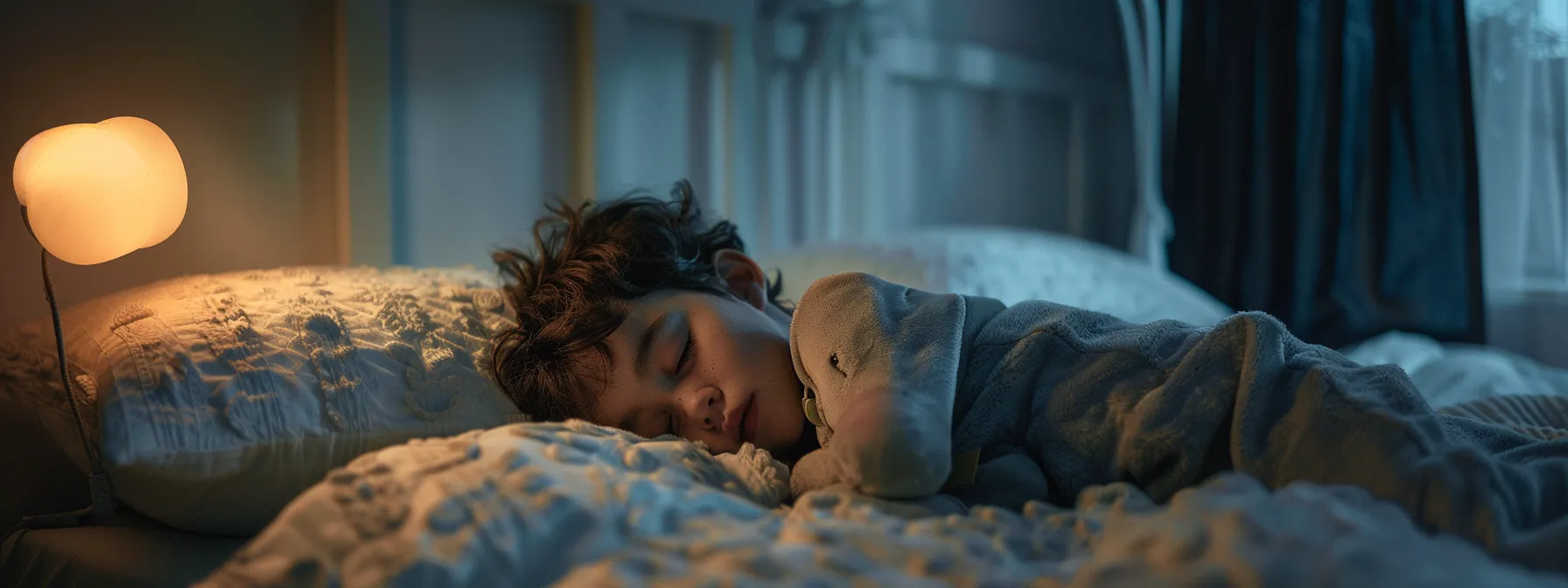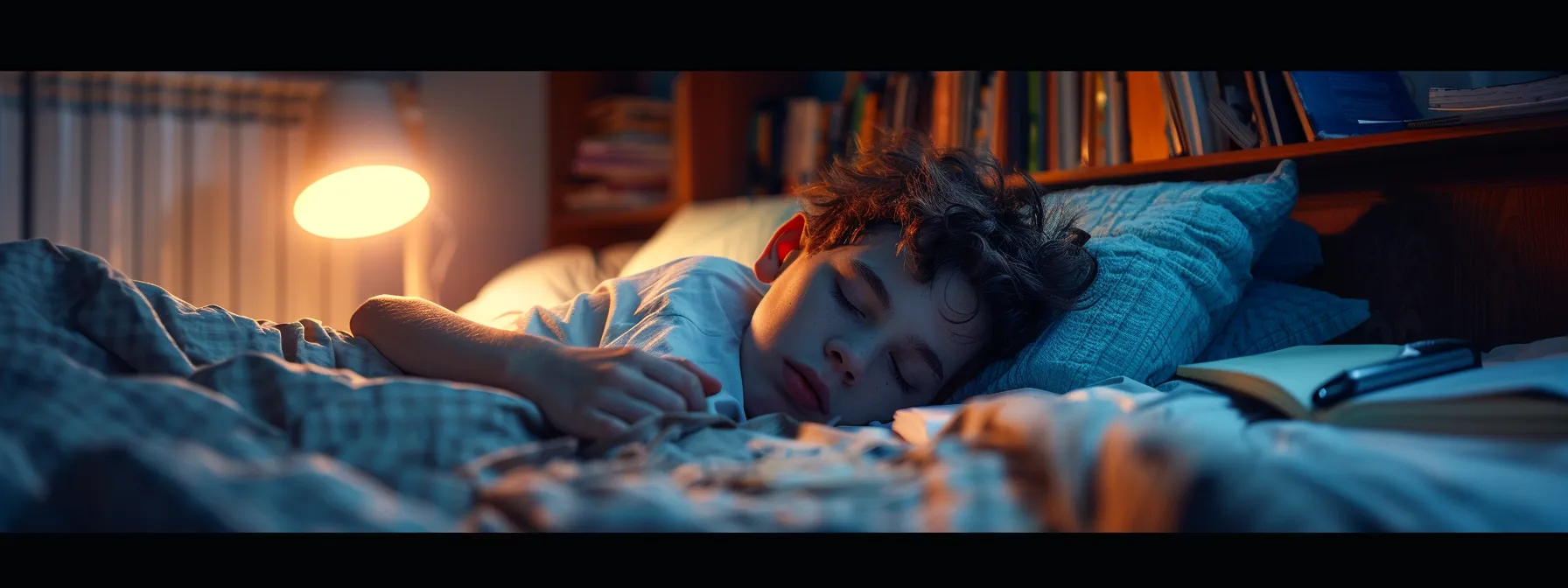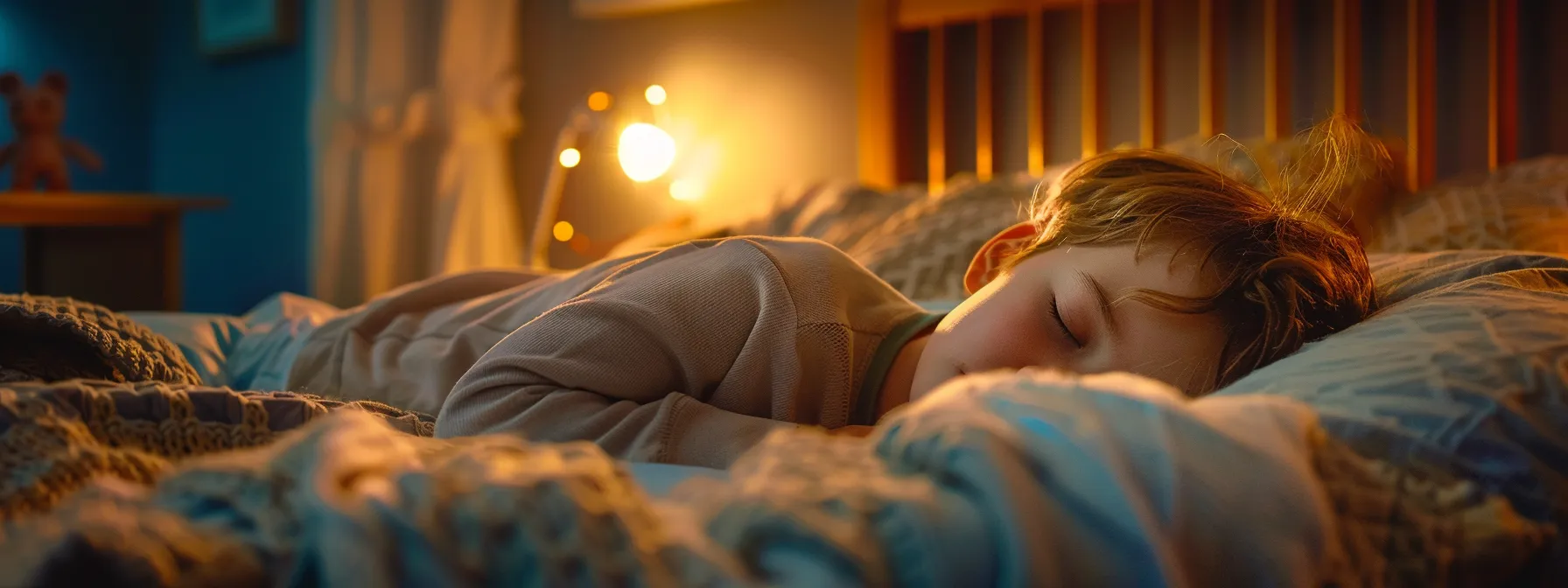Is your child having trouble sleeping at night? Sleep apnea isn’t just an adult issue; it can affect kids, too. In this article, parents will learn how to identify sleep apnea symptoms in children, recognize common signs, and understand the differences from other sleep disorders. By addressing these issues, families can ensure their little ones get the restful sleep they need for a healthy life. Let’s dive into the essential information that can help keep your child safe and well-rested.
Key Takeaways
- Sleep apnea in children can disrupt breathing during sleep, causing serious health issues
- Recognizing symptoms like loud snoring and irritability is crucial for timely medical intervention
- Treatments may include positive airway pressure machines or surgery for enlarged tonsils
- Daytime behavioral issues can stem from lack of restful sleep due to sleep apnea
- Early identification and care can prevent long-term developmental and learning difficulties in children
Understanding Sleep Apnea in Children
Sleep apnea in children occurs when breathing is interrupted during sleep. The two main types are obstructive sleep apnea, often linked to enlarged tonsils or the role of the tongue, and central sleep apnea, where the brain fails to transmit signals to breathe. Recognizing symptoms like snoring is essential, as untreated cases can lead to increased carbon dioxide levels in the body, known as hypercapnia, affecting overall health. Understanding these signs can help caregivers request appointment for appropriate health care.
Defining Sleep Apnea and Its Types
Sleep apnea in children is a condition where breathing pauses during sleep, and it primarily comes in two forms: obstructive and central. Obstructive sleep apnea is often caused by factors like nasal congestion or enlarged tonsils, while central sleep apnea occurs when the brain doesn’t send proper signals to the muscles that control breathing. For children with sleep apnea, treatments may involve using a machine that delivers positive airway pressure to keep airways open, helping to ensure better sleep quality and overall health.
The Importance of Recognizing Symptoms
Recognizing the symptoms of sleep apnea in kids is crucial for their well-being. When parents notice signs like snoring or irritability during the day, it’s worth discussing with a health care provider. Left untreated, sleep apnea can lead to other issues, such as an elevated heart rate and behavioral challenges. Sometimes, surgery may be necessary to address physical risk factors like enlarged tonsils, helping to restore better sleep for children.
Recognizing Common Symptoms of Sleep Apnea in Children

Observable signs of sleep apnea in children during sleep, such as loud snoring or periods of silence, are key indicators of this disease. Daytime symptoms like excessive sleepiness and difficulty concentrating often relate to sleep disturbances. Moreover, behavioral changes, including irritability and mood swings, can be connected to hypopnea, emphasizing the need for a physical examination to ensure proper diagnosis and treatment.
Observable Signs During Sleep
When observing children during sleep, look for noticeable signs such as loud snoring, irregular breathing patterns, or pauses in breathing. These symptoms can indicate inflammation in the airways, which may complicate diagnosis. Additionally, children with sleep apnea may exhibit signs of gastroesophageal reflux disease, as difficulty breathing can lead to discomfort that interrupts their sleep, making it essential for parents to monitor these behaviors closely.
Daytime Symptoms Related to Sleep Disturbances
During the day, children with sleep apnea often show symptoms linked to their nighttime struggles, such as excessive sleepiness or irritability. A child’s behavior can change when they don’t get enough restful sleep, sometimes leading parents to consult a physician for advice. If weight loss becomes an issue due to difficulty breathing, families might find it necessary to visit an emergency department or explore options in pulmonology for further diagnostic support and treatment.
Behavioral Changes Associated With Sleep Apnea
Children with sleep apnea might show noticeable behavioral changes due to disrupted sleep patterns. For instance, they may become more irritable, struggle with focus, or exhibit changes in their muscle tone, all linked to the lack of restorative rest. Addressing these concerns often requires consultation with a healthcare professional, who may suggest polysomnography to diagnose the condition and recommend therapy options that can significantly improve a child’s quality of life.
Distinguishing Symptoms From Other Sleep Disorders

Identifying sleep apnea symptoms involves recognizing the signs unique to this condition, such as difficulty breathing that may result in increased carbon levels and throat issues. It’s essential to differentiate these symptoms from other sleep disorders that can also cause fatigue and aggression in children. By understanding these overlaps, caregivers can better assess risks and seek appropriate interventions.
Symptoms Unique to Sleep Apnea
Symptoms unique to sleep apnea in children often include loud snoring and periods where breathing stops. These signs can be particularly concerning, especially in the context of childhood obesity, as the American Academy of Pediatrics notes that excess weight can contribute to airway obstruction. Children with asthma may also experience worsened symptoms, making it essential to observe how respiratory issues interact with sleep quality; a nasal spray may help manage allergies or congestion, which can further complicate sleep patterns.
Overlap With Other Sleep Issues
When it comes to identifying sleep apnea symptoms in kids, it’s crucial to recognize how these symptoms might overlap with other sleep disorders. Issues like mood swings can manifest similarly in children facing both sleep apnea and restless leg syndrome. For example, infants may experience sleep disturbances due to ear infections or other conditions impacting the brain and sleep quality, making it harder for parents to differentiate between ailments. Additionally, untreated sleep apnea can lead to hypertension, another reason to closely monitor behavioral changes.
When to Seek Professional Guidance

Signs that suggest a child may need medical evaluation for sleep apnea include persistent snoring, excessive daytime fatigue, or breathing difficulties during sleep. Pediatricians play a crucial role in identifying these symptoms and may refer families to specialists if adenoids are suspected or if the child is overweight, impacting their oxygen levels. Understanding these indicators is vital for ensuring timely care.
Signs Indicating a Need for Medical Evaluation
If a child consistently shows signs like loud snoring, excessive daytime sleepiness, or struggles with breathing during sleep, it’s a solid indication that a medical evaluation is needed. Caregivers should also consider the child’s medical history, as well as their nutrition and hygiene practices, as these factors can impact overall health and contribute to sleep complications. Addressing these signs early on can prevent more serious concerns, such as heart failure, ensuring that children receive the care they need for better sleep and well-being:
Understanding the Role of Pediatricians and Specialists
Pediatricians play a key role in addressing sleep apnea concerns in children. They can perform initial exams to evaluate symptoms and, if needed, refer families to specialists who focus on respiratory and allergy issues. For instance, when enlarged tissue in the throat contributes to breathing difficulties, a specialist might recommend treatments or medication tailored to the child’s unique needs. If caregivers suspect sleep apnea in their child, they should not hesitate to request an appointment with their pediatrician for a thorough evaluation.
Diagnostic Procedures for Sleep Apnea
Common tests used to identify sleep apnea symptoms in children often include both home and clinical sleep studies. Parents can play a significant role in monitoring their child’s sleep hygiene and overall well-being. These assessments help uncover issues like jaw alignment and potential connections to chronic kidney disease, ensuring that children receive the appropriate care from experts, including insights from the burlington dentist.
Common Tests Used to Identify Sleep Apnea Symptoms
To identify sleep apnea symptoms in kids, common tests like overnight sleep studies are essential. These evaluations often measure breathing patterns, including instances of mouth breathing and how well a child maintains pressure in their airways during sleep. Additionally, doctors may check for related conditions, such as sickle cell disease, which can impact overall health and contribute to breathing difficulties through the nose. Identifying these issues early can help ensure that children receive timely treatment and enjoy restful sleep:
- Overnight sleep studies to monitor breathing patterns
- Assessments for any obstruction in the nasal passages
- Evaluations to check for conditions related to sickle cell disease
- Measurement of airway pressure during sleep
Home vs. Clinical Sleep Studies
Home sleep studies offer the convenience of monitoring a child’s sleep patterns in their familiar environment, which can be less stressful than clinical options. These assessments often provide valuable insights into issues like obstructive sleep apnea caused by factors such as enlarged tonsils or even environmental triggers like tobacco smoke. On the other hand, clinical sleep studies provide a comprehensive evaluation under medical supervision, allowing doctors to measure critical elements like blood pressure and breathing patterns more accurately, ensuring that any underlying genetics or orthodontics needs are appropriately addressed.
Impact of Untreated Sleep Apnea in Children

Untreated sleep apnea in children can lead to various health risks and complications, including difficulties with attention and learning. Long-term effects such as developmental delays and reduced quality of life may arise, impacting a child’s overall growth. Addressing these concerns early on can help prevent further issues related to airway obstructions and their effects on the neck and respiratory function.
Potential Health Risks and Complications
Untreated sleep apnea in children can lead to several health risks and complications that affect their overall development and well-being. When breathing is interrupted during sleep, it can result in attention issues and learning difficulties, making it hard for kids to perform well in school. Additionally, the lack of restful sleep may contribute to behavioral changes and developmental delays, emphasizing the importance of early recognition of sleep apnea symptoms so that families can seek appropriate care and support.
Long-Term Effects on Development and Quality of Life
When sleep apnea goes untreated in kids, it can seriously affect their long-term development and quality of life. The lack of restful sleep can lead to ongoing issues with attention and learning, making it challenging for them to thrive in school. Not only do children face behavioral changes, but these sleep disturbances may hinder their physical growth and emotional well-being, highlighting the need for early identification and intervention to ensure they remain on track for healthy development.
Conclusion
Identifying sleep apnea symptoms in children is crucial for ensuring their overall health and well-being. Parents should remain vigilant for signs like loud snoring, excessive daytime sleepiness, and breathing difficulties during the night. Early recognition enables timely intervention, preventing potential long-term effects on development and quality of life. By seeking medical evaluation and support, families can significantly improve their children’s sleep quality and overall health.
At The Burlington Dentist, we know that you want to be someone who can breathe clearly and live without the constant burden of allergy symptoms. In order to do that, you need an optimized airway that functions properly despite allergic reactions. The problem is that chronic allergies silently reshape your airways, which makes you feel constantly congested, exhausted, and frustrated with persistent breathing difficulties.
We believe everyone deserves to breathe freely without letting allergies control their life. We understand how chronic allergies can impact every aspect of your daily activities and sleep quality, which is why Dr. Bethaney B. Brenner has developed a comprehensive approach that addresses both allergy symptoms and airway health.
Book Your Consultation Today!
Dr. Bethaney B. Brenner DMD
8 Milford St, Burlington, CT 06013
Related Articles
Sleep Apnea Symptoms in Children, Signs of Child Sleep Apnea, Identify Sleep Disorders in Children, The Importance of Sleep Studies, Kids Airway Quiz, Pediatric Sleep Apnea, Allergies and Airway, Crooked Teeth and Airway, Bedwetting and Airway, ADHD and Airway, The Vivos Treatment, Sleep Apnea 101





